First impressions of The Witcher 3: Wild Hunt on Xbox One
Well, it's finally here. I've hyped myself into some frenzy over this game, and if you follow me on Twitter you're probably sick of all my Witchery tweets (sorry about that).
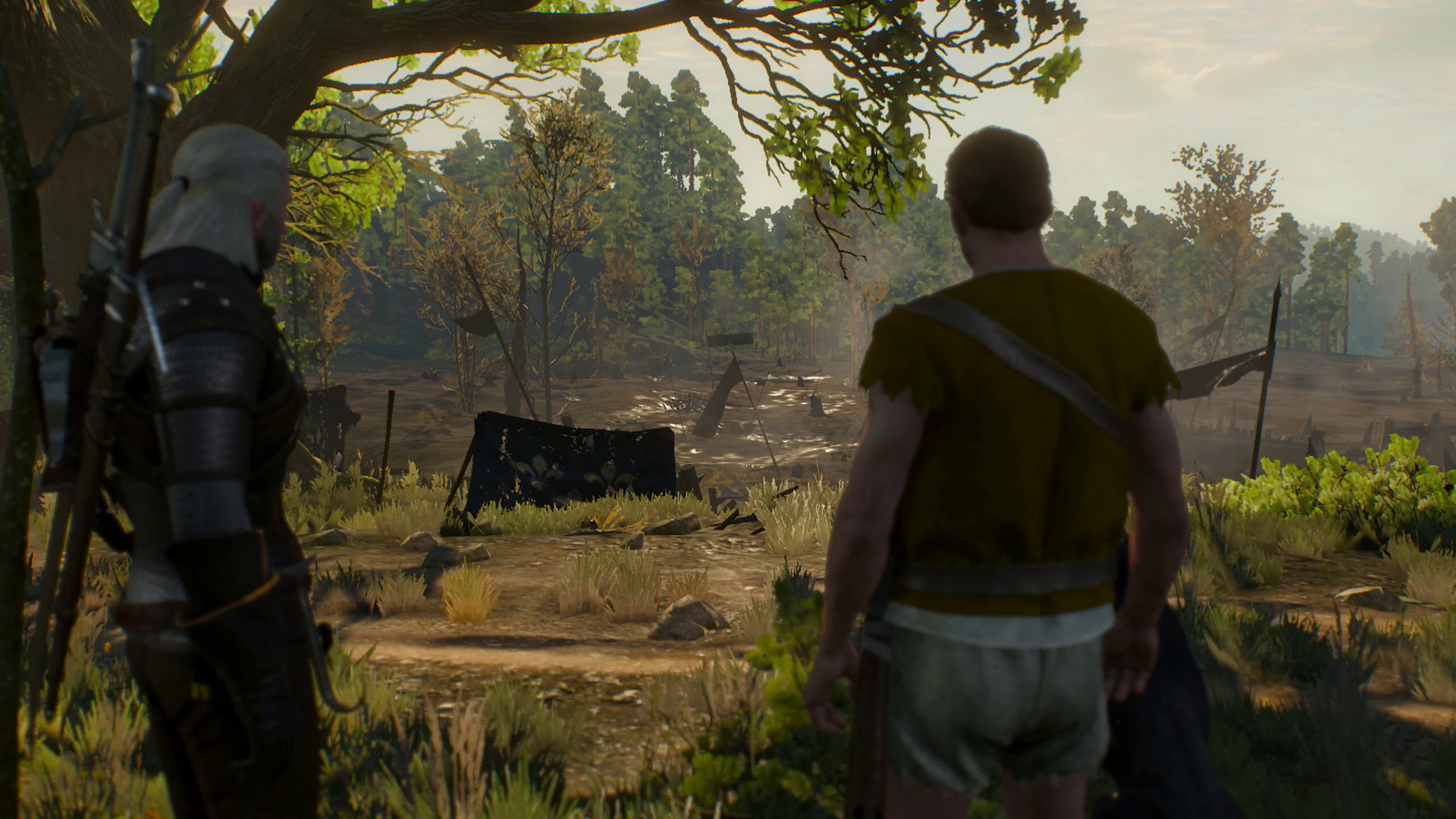
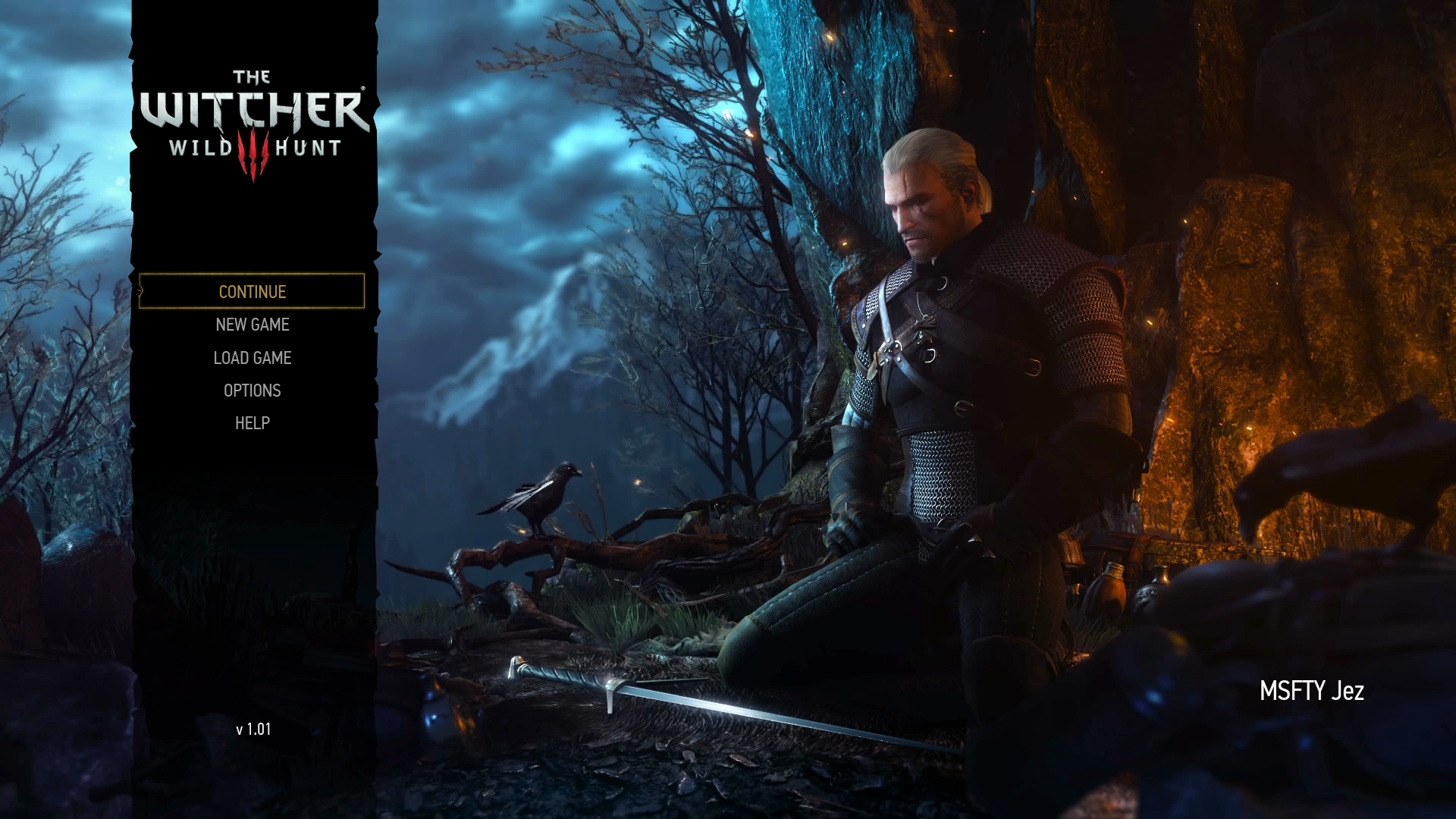
The Witcher 3: Wild Hunt culminates Geralt's story, but it also hopes to dethrone the likes of Elder Scrolls V: Skyrim and Dragon Age Inquisition from the RPG throne.
I've played for around 2 hours so far. Our full review is in the works, but I wanted to offer some early impressions for those who might be curious and to kick-start discussions for those who have already picked up the game.
Minor plot spoilers for the first hour or so follow.
A living world brimming with death
For those unfamiliar with the series, to describe The Witcher as dark is probably an understatement. Dragon Age has its fair share of grimness but tends to place the emphasis on the fantasy of its highly magical world. The Witcher draws inspiration from an eponymous series of books by Andrzej Sapkowski, which in turn draws inspiration from historical accounts of medieval Europe. The Witcher offers a glimpse at why they named them The Dark Ages, albeit with a side helping of monsters and magic. Humanity's darkest aspects are laid bare in detail throughout the series, and even the first two hours of The Witcher 3 are brimming with violence.
The game starts innocently enough (nudity aside), but it smothers you with a foreshadowing reminder that Geralt's life is nothing but peril. Geralt dreams of The Wild Hunt, a mysterious group of wraiths who appear during wars and plagues, reaping the souls of the dead to add to their number. The Wild Hunt's ultimate motivations are unclear and are the subject of many rumours and legends. They've been an important plot point in both previous games and have hunted Geralt and those close to him for some time.
When Geralt wakes from his nightmare, he's back on the trail of Yennefer, both a sorceress and a former lover who was indirectly mentioned in both The Witcher 1 and 2. After a brief conversation, you're accosted by ghouls and thus begins your open world training. The prologue serves as a tutorial, which eases players into the world of The Witcher a lot more considerately than The Witcher 2 did.
After learning how to swing a sword, you hop on your horse, and it is then that the scale of the game hits home.
All the latest news, reviews, and guides for Windows and Xbox diehards.
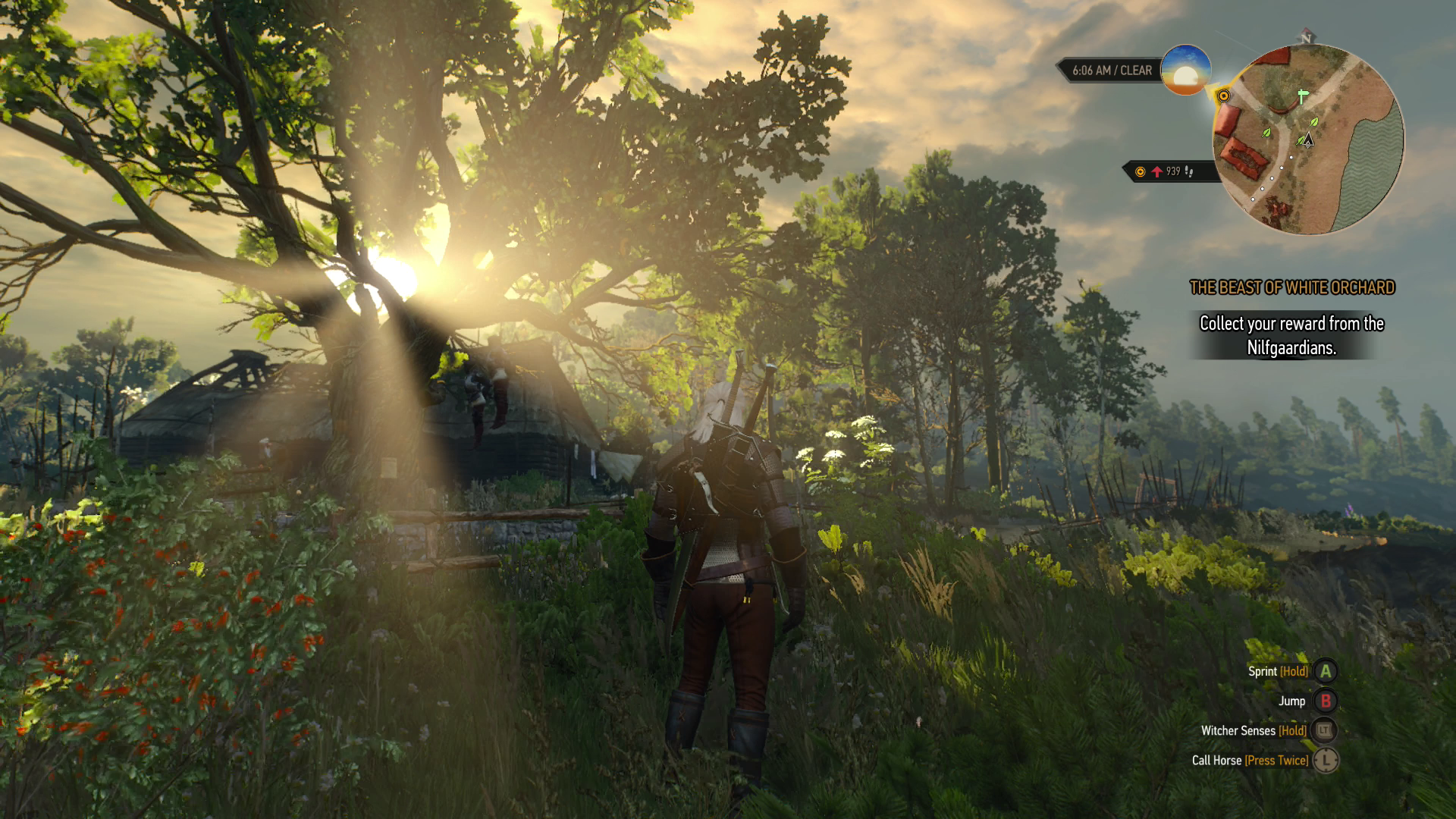
Mists are settling in the valley; sunlight is filtering through the trees, casting long dynamic shadows that hit every surface, every blade of grass, every chain link in Geralt's armour. The traversable terrain as far as the eye can see (and see far you will - the draw distance is insane). A vast ecosystem of wildlife interacting with each other with behavior design not seen since Red Dead Redemption. Just standing at the top of a small hill and surveying the expanse from your immediate vicinity serves as a strikingly telling labor of love. You will simply know that this game is special.
However, The Witcher 3 is let down early on by transitions from in-engine graphics to pre-rendered video cut-scenes, which cause the game to freak out. During a fight scene, I sliced someone's head off, only to see it spin hovering in the air for a few seconds while the game loaded a cut-scene. The cut-scenes themselves are choppy, which reminds me of jitter you sometimes get on Netflix when the connection isn't strong enough to stream in HD, but it still tries to anyway. The video encoding was apparently broken in the day one patch, so hopefully it's something CD Projekt RED can fix before I finish my replay of The Witcher 2.
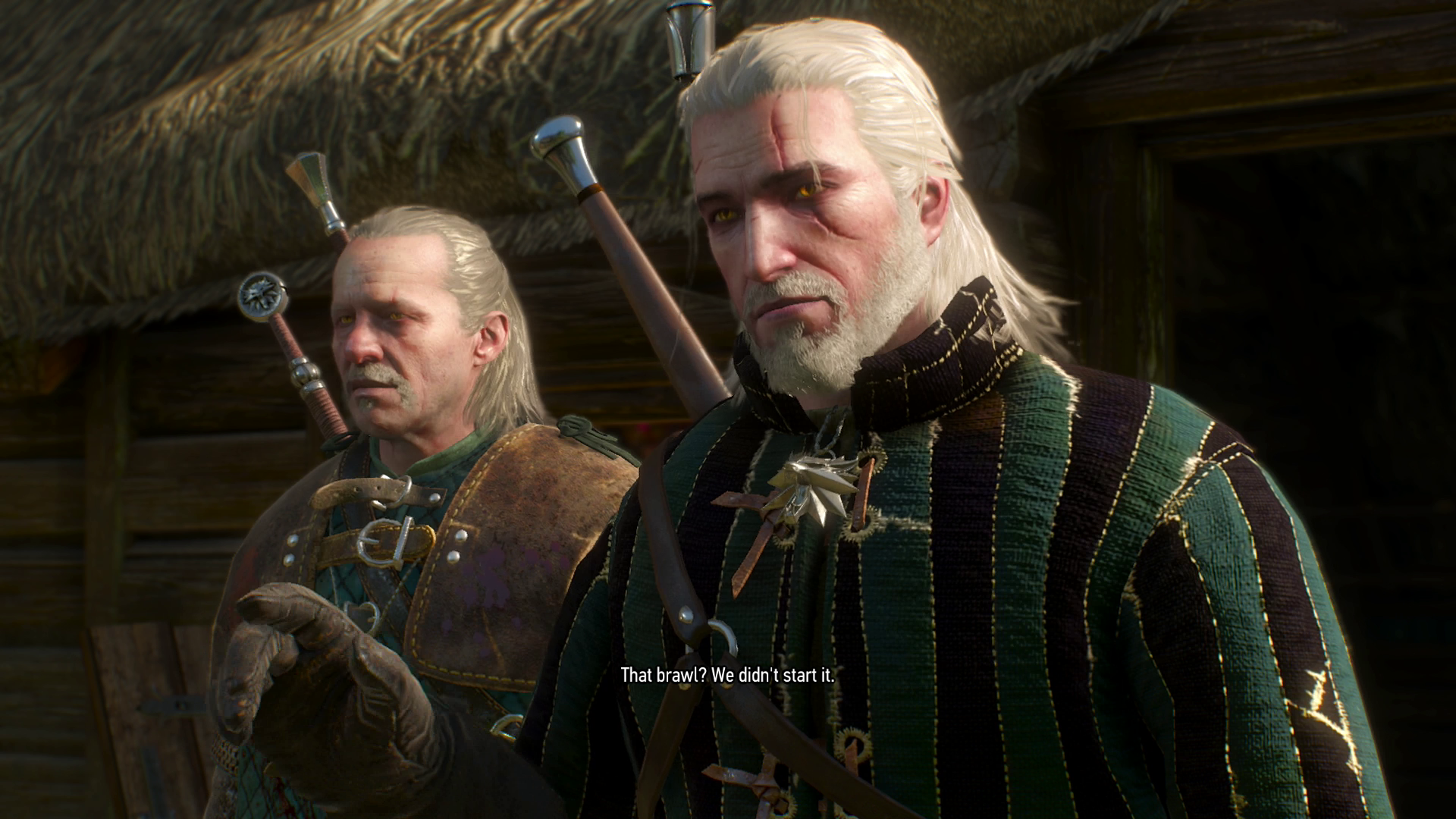
Despite those problems, during open world play The Witcher 3 visuals are jaw-dropping on Xbox One, retaining many of the higher-end visual features you'd expect of an SLI PC gaming rig. I haven't seen a single instance of texture popping or loading in the open world, and the dynamic scaling between 900p and 1080p is completely unnoticeable. Even when swarmed by ten wolves during extreme winds in a forest, throwing rapid dynamic shadows all over the place, the frame rate was buttery smooth.
A living world that wants to kill you, horribly
The Witcher is a tale about a monster hunter, and all three games have placed an emphasis on the behavior of its creatures. Dynamic day/night cycles will change what types of monsters appear, and may even alter their combat patterns. Geralt is super-human, but he's not Superman - he's plastered with scars and old injuries. I feel as though CD Projekt RED have approached combat design to hallmark this vulnerability.
On normal difficulty, the combat mechanics sit somewhere between Assassin's Creed and Dark Souls. Your weapon connects on a physical basis rather than a targeted basis, making positioning more important than any AC game. In another lean towards Dark Souls, you're punished severely for failing to parry each and every monster's unique attack patterns - and there are limits to how often you can parry as well. However, Geralt is a lot agiler than your typical Dark Souls knight. He's able to roll and dodge with impunity and dive across large areas to land hits on creatures that surround him, which is more similar to Assassin's Creed or Batman: Arkham Asylum.
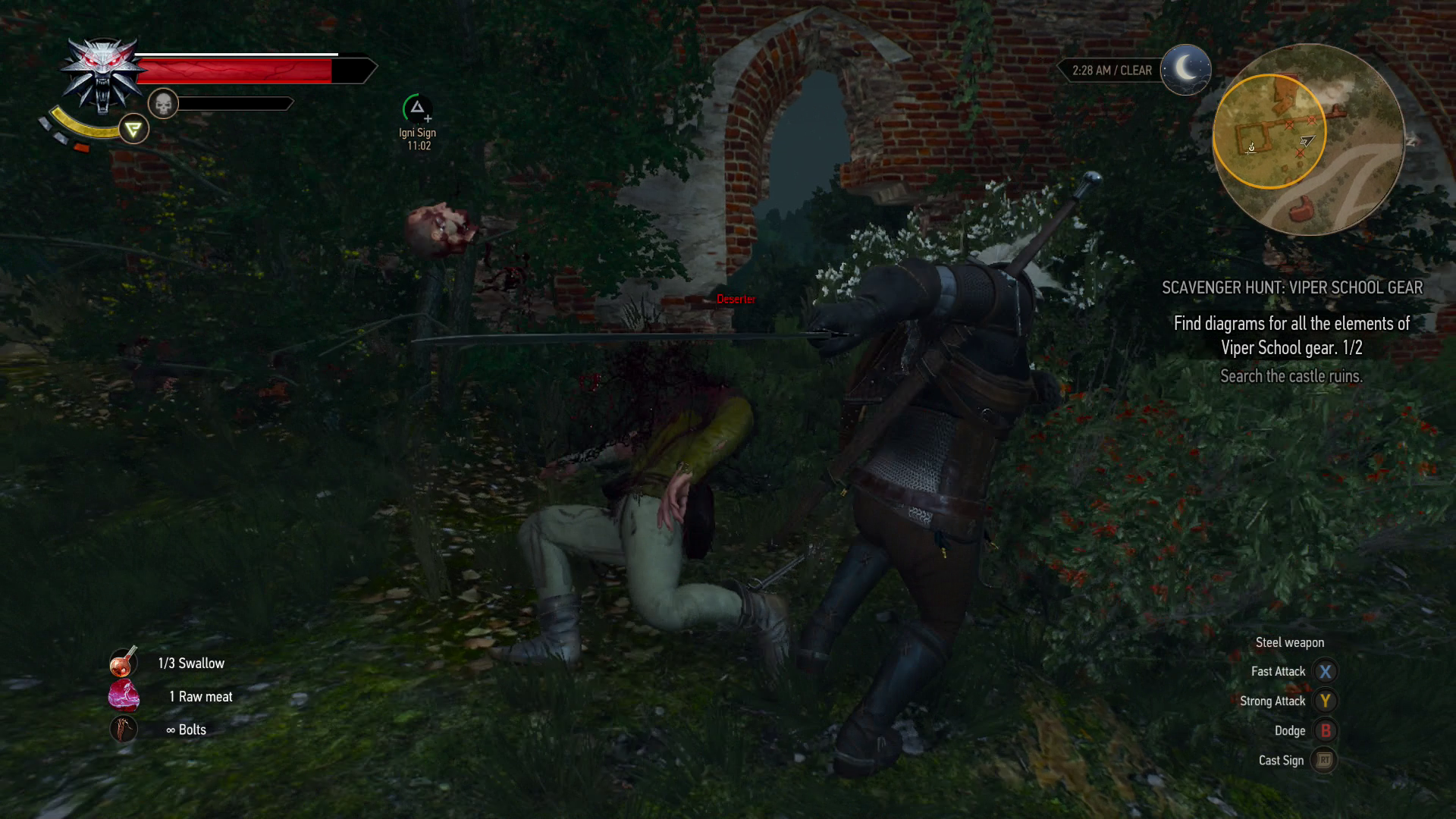
I find the combat system puts a lot of people off (myself included in The Witcher 2), but it's partially because they don't do a great job of explaining how to get stuck in. Pressing a directional button towards an enemy and pressing quick attack will very briefly stun most creatures if they're not already half way through an attack animation. Doing so in quick succession means you can dodge, attack and briefly stun at the same time when surrounded, making those swarms of drowners more easy to deal with.
You can prepare for battles using weapon oils and temporary potions which buff Geralt's damage and defense, and these items aren't just for those more treacherous battles. Particularly on the higher difficulties, you will be using oils and potions frequently - and that's by design. Witchers are essentially warrior alchemists after all.
Killing enemies with critical strikes not only reward you with, well, not dying, but insane execution animations and dynamic gore which adds further impact to Geralt's weapon swings. Heads will roll, as well as arms, torsos, intestines, you name it. When you understand that The Witcher 3 isn't your typical third person action game, it is incredibly rewarding.
A living world full of consequence and amazing little details
The Witcher 3 marketing campaign has placed a lot of emphasis on the fact it is a living breathing world. The vendor economy is inter-connected, NPCs banter with each other and animals well, eat each other, but what struck me in the first small village was the interconnectedness of seemingly unconnected side-quests.
Dragon Age Inquisition enjoyed a huge world, but Bioware failed to attach a lot of meaning to its expanses. Grinding quests that are essentially kill ten magic bears over and over becomes a chore, and the way they're presented in a totally random fashion plays like a checklist of content as opposed to role-playing. I blame World of Warcraft for popularizing these design mistakes but if what I've seen so far remains true, hopefully The Witcher 3 will bury them.
One of the early side quests asks you to chase away a ghost that is haunting a local well, as the piles of corpses from the war has made the river water undrinkable. I was expecting a simple case of go here, kill this, return prize, get ph4t l00t. The seemingly small side quest ended up going from engaging to amazing in a few simple steps and has me excited for what larger quest hubs will bring.
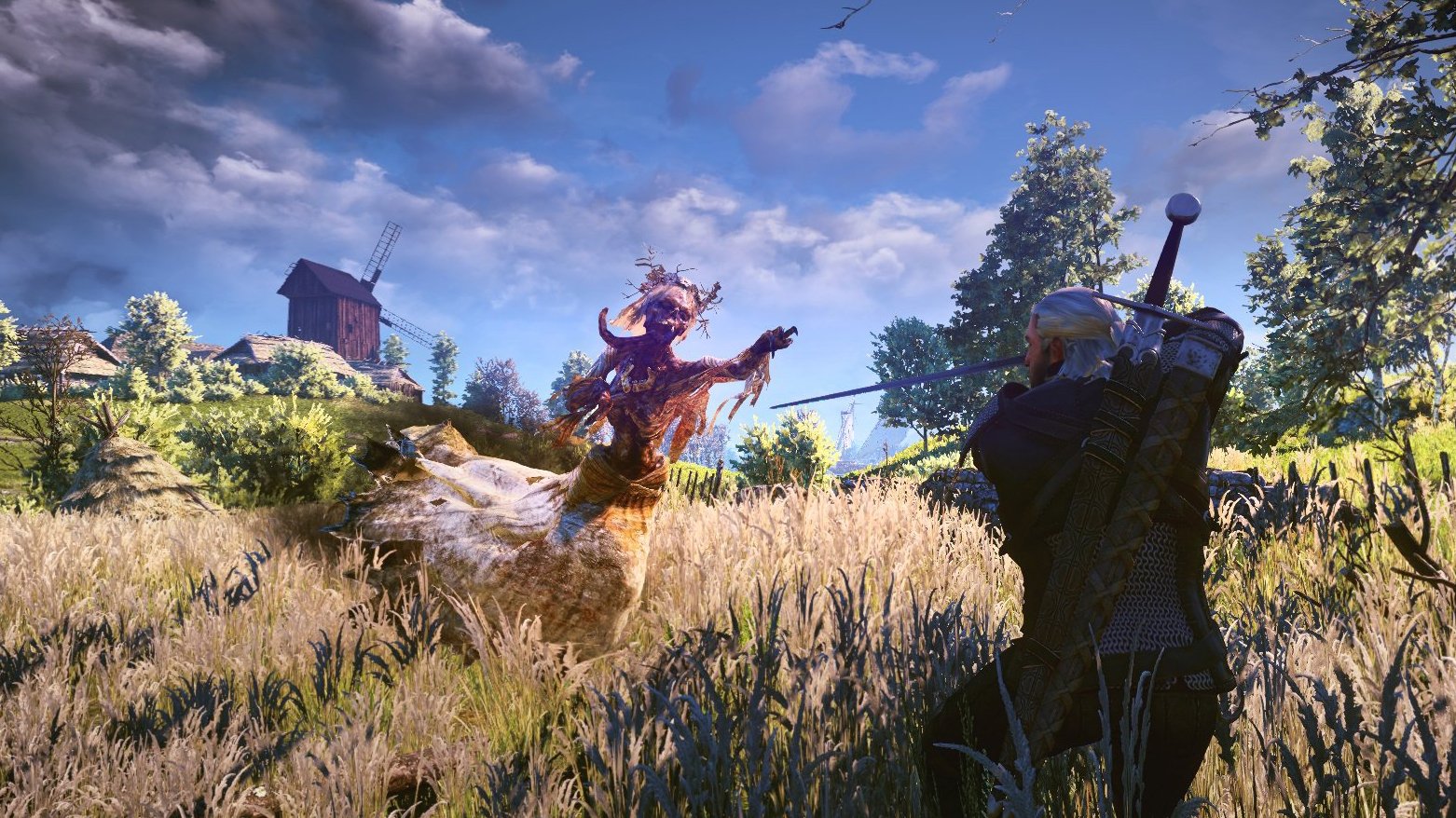
It turned out that a noonwraith is haunting the well, a ghost bound to a location due to a strong emotional connection. After being smashed by the ghost, the tutorial advises that you take a more analytical approach. Using your Witcher senses (similar to Arkham Asylum's detective mode), you can glean clues from the environment that would otherwise be hard to spot. I discovered that the wraith was likely the wife of a murdered man, thanks to a trail of blood, a dude's skeleton and a worn out journal. The woman had expected to meet with the local Lord to repair ties with her village following an altercation. She noted that there were rumors that he had become more amenable after the death of his son. Unfortunately, it doesn't seem to have worked out, as not long after you find her dismembered corpse hung in the well.
After researching noonwraiths further, you find that you'll have to recover a lost possession of theirs, and then burn it with the corpse to free their spirit from this world. After a swim in the well, you find the severed arm and a bracelet, and you're able to put finally the ghost to rest.
The investigation aspect alone gave the kill quest the flavor and context it needed to retain immersion, but what followed later excited me for the future of WRPG side-questing, providing other developers take note.
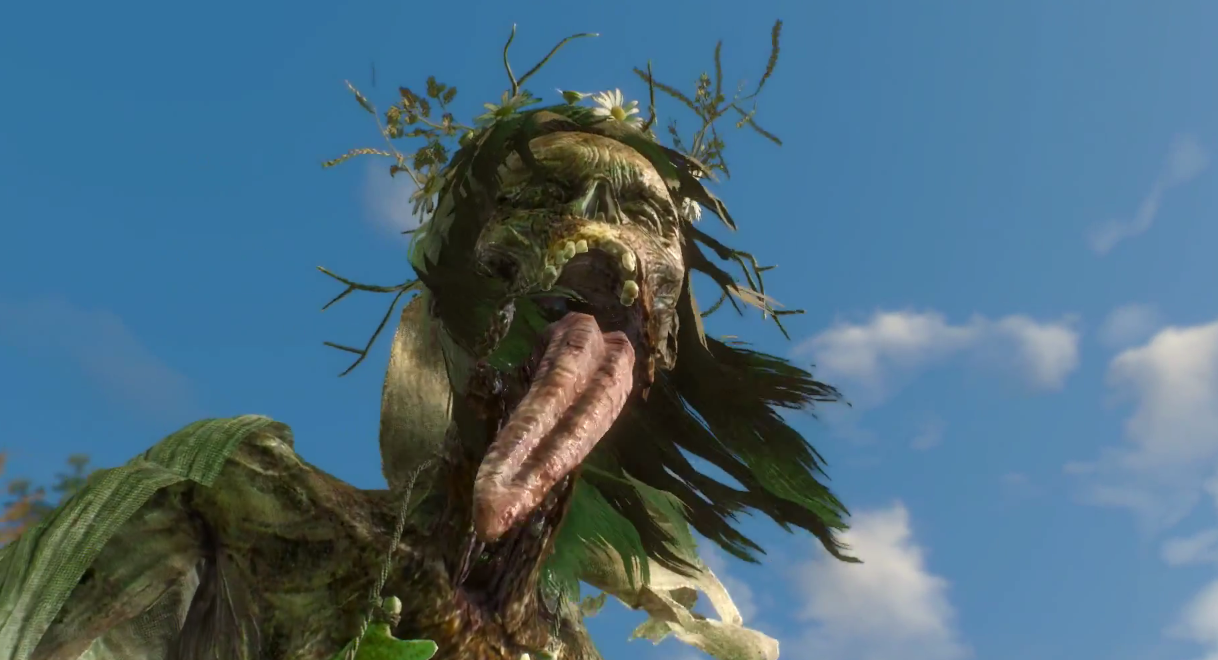
During the main story, you're tasked to kill a griffin in exchange for information on the whereabouts of Yennefer. It's similar to the noonwraith quest but on a grander scale. You're sent to track its behavior, taking you to meet a local hunter. While you're with him on the trail, the hunter notes that the village drove him away. If you press him to explain why, he mentions that he fell in love with the Lord's son and that they were caught in a barn. The village folk branded him a 'freak', and the hunter's lover hung himself from shame. This snippet of information has no bearing on the quest itself. But it connects itself to the noonwraith side quest - which had referenced that the Lord had become more receptive since his son died (only he hadn't, he'd just become a bit more murdery).
Why is this important? It's important because it creates the impression of a living, connected world. When other RPGs do this, it's typically part of a collection of main plot points or very direct references that are consequential to the story. The Witcher 3's smaller side quests thus far may not be entirely dependent on each other or consequential, but they've all contained references to the narrative of life in that particular area - which doesn't feature as a quest in of itself.
The inn-keeper who offers information on the Griffin notes that the beast attacked one of the villagers. Later on, you'll find her in the healer's house on her death-bed as part of another quest. You'll hear NPCs gossiping randomly about the innkeeper being in league with the invading Nilfgaardians, and see her mobbed later as a result.
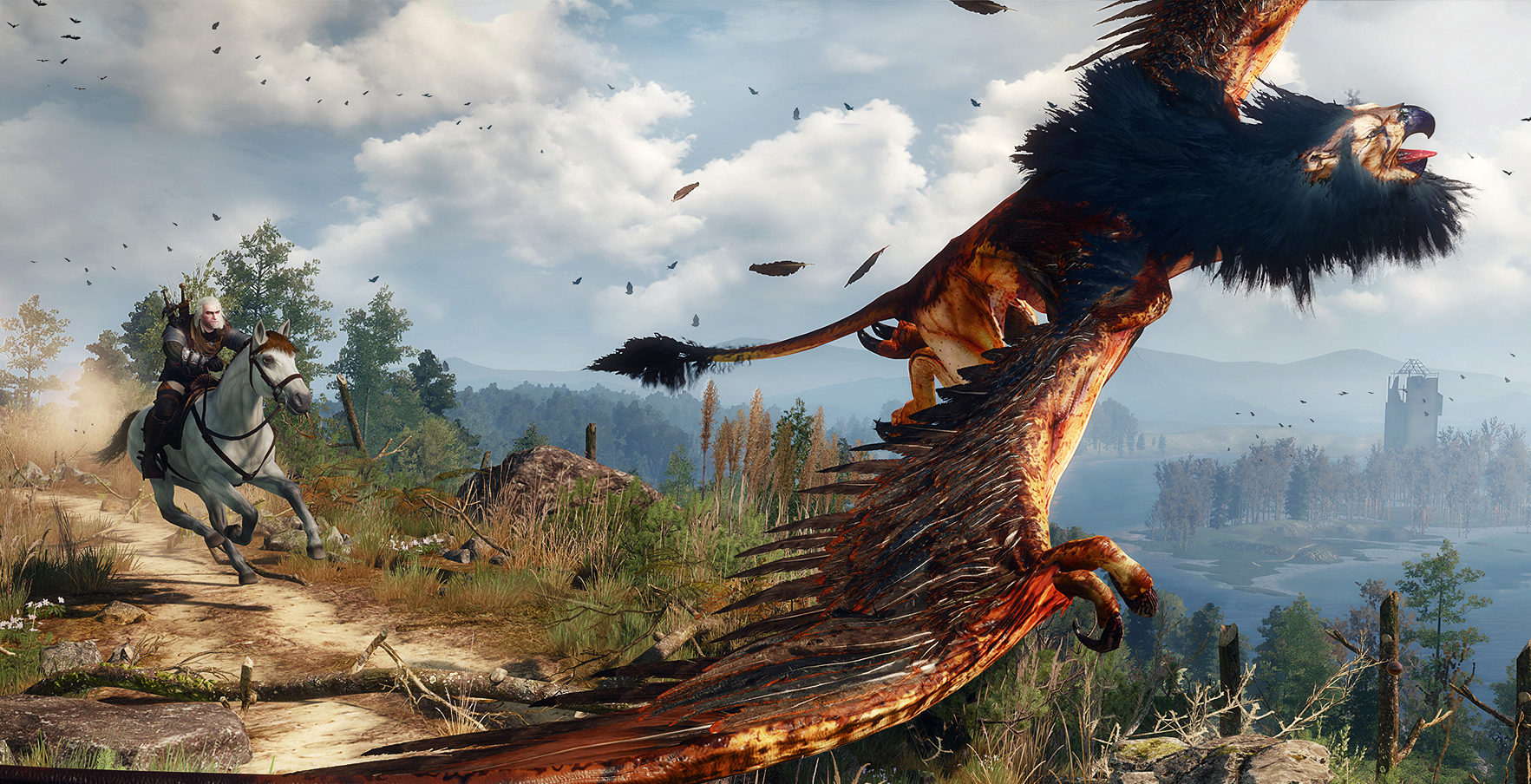
CD Projekt RED seem to have given a lot of thought about how quests, no matter how small, can interact with each other. Also how quest contributes to each other's narrative, regardless of how directly consequential they might be.
It may seem like a small point to write about, but for me it breathes new dimensions into a genre that was in danger of heading down the Hemmet Nessingwary Kill 30 Space Boars route of side-questing. So far, it seems that CD Projekt RED have side-stepped this and have instead been able to realize a world that feels truly inhabited. They've spent extra time to give minor NPCs a chance to have their story too, and the game feels amazing for it.
Geralt remarks to the local healer that it all seems like a lot of misfortune for such a small town. She replies that even the smallest villages have a story to tell. I can't even begin to describe my excitement to go and discover those stories.
A living world that begs to be explored
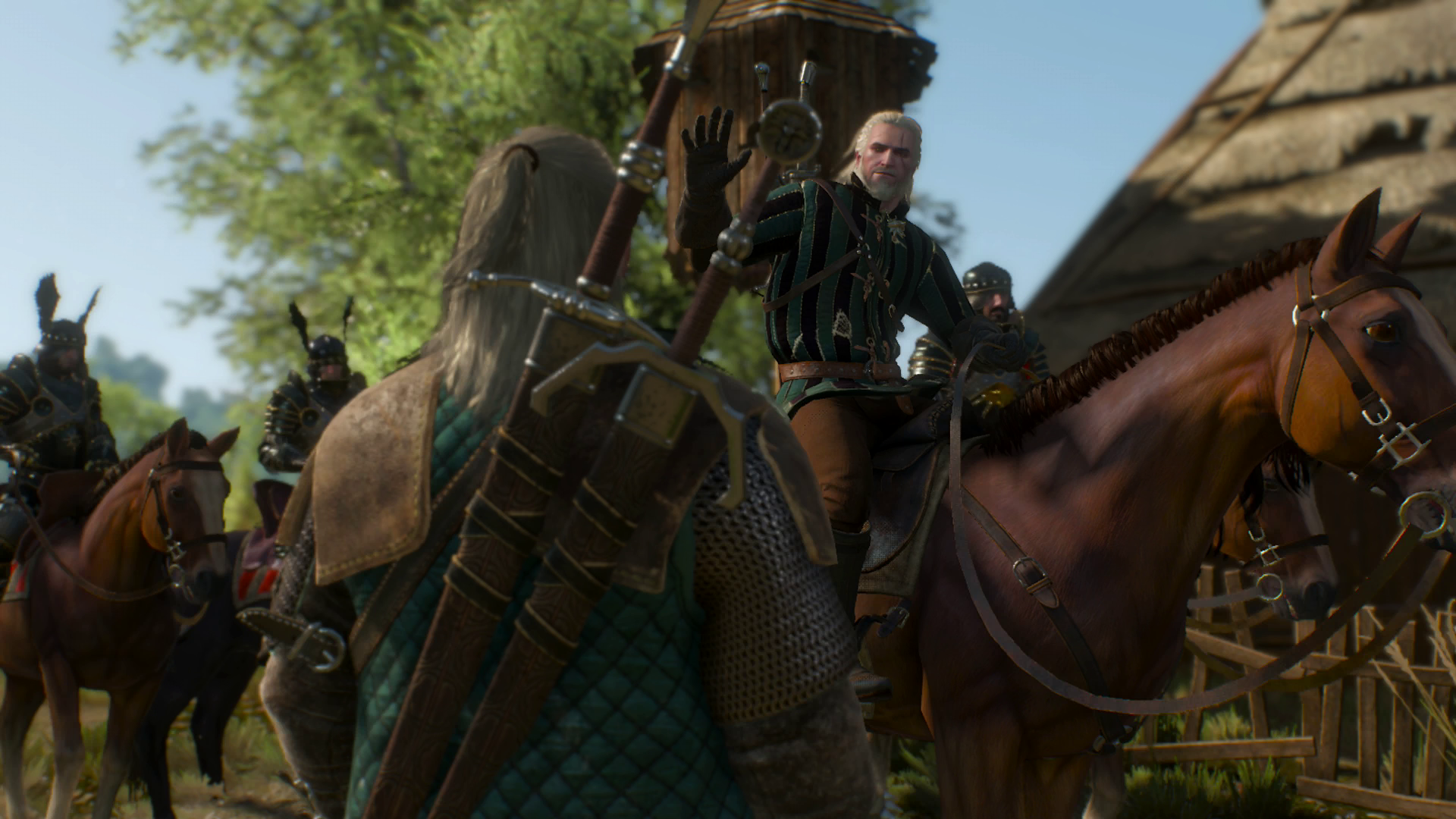
If you're a fan of RPGs you've probably purchased The Witcher 3 already, but if you're a fan on the fence I cannot implore you enough to check it out. Besides what I've noted above the game features rich and complex crafting systems, a detailed character upgrade system and hundreds of settlements, caves and crypts in what seems like the richest open world setting in history. If the first two hours are any indication, the unprecedented NPC interactivity will probably change the industry, like Skyrim, and Red Dead Redemption did before it.
But I'm mindful that all this is just the first two hours of the game. If you're still skeptical, stay tuned for Paul Acevedo's full review to see if these early impressions pan out when the hype dies down. The early signs are promising.

Jez Corden is the Executive Editor at Windows Central, focusing primarily on all things Xbox and gaming. Jez is known for breaking exclusive news and analysis as relates to the Microsoft ecosystem while being powered by tea. Follow on Twitter (X) and tune in to the XB2 Podcast, all about, you guessed it, Xbox!
